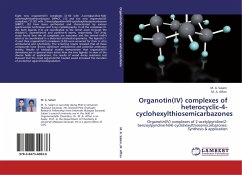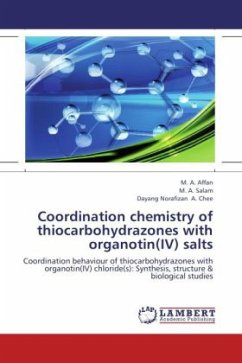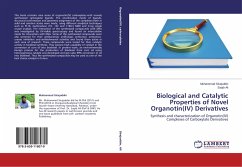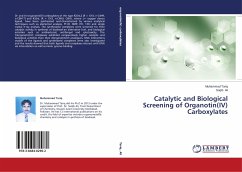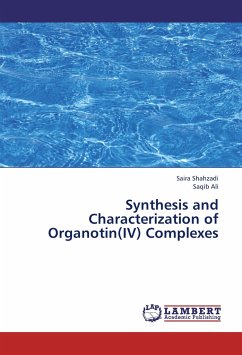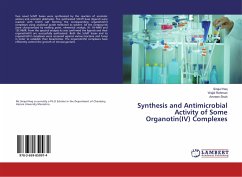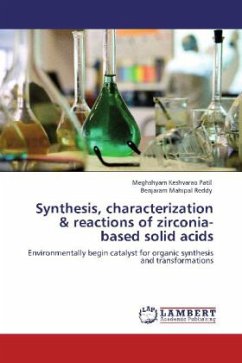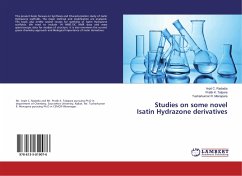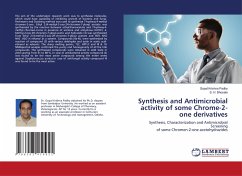
Synthesis, structure & bioactivity of organotin(IV)hydrazone compounds
Synthesis and biological studies of organotin(IV) complexes of pyruvic acid phenylhydrazone with thiocyanate co-ligand
Versandkostenfrei!
Versandfertig in 6-10 Tagen
32,99 €
inkl. MwSt.

PAYBACK Punkte
16 °P sammeln!
The reaction of pyruvic acid phenylhydrazone [HPAPD, (1)] with organotin(IV) chloride(s) yielded the organotin(IV) complexes (2-11). Molecular structural assessments of the complexes (2-11) have been based on data from UV-Vis, IR, 1H and 13C NMR spectral studies. The molecular structure of HPAPD (1) has also been determined by X-ray diffraction. Spectroscopic data suggested that HPAPD (1) is coordinated to the tin(IV) atom via carboxylate-O and azomethine-N atoms and acted as a mononegative bidentate chelating agent in all the organotin(IV) complexes (2-11). Spectral data indicated that thiocy...
The reaction of pyruvic acid phenylhydrazone [HPAPD, (1)] with organotin(IV) chloride(s) yielded the organotin(IV) complexes (2-11). Molecular structural assessments of the complexes (2-11) have been based on data from UV-Vis, IR, 1H and 13C NMR spectral studies. The molecular structure of HPAPD (1) has also been determined by X-ray diffraction. Spectroscopic data suggested that HPAPD (1) is coordinated to the tin(IV) atom via carboxylate-O and azomethine-N atoms and acted as a mononegative bidentate chelating agent in all the organotin(IV) complexes (2-11). Spectral data indicated that thiocyanate group is N-coordinated to the Sn(IV) ion in the complexes (7-9). The coordination number of tin in all the organotin(IV) complexes (2-11) is five. The cytotoxicity of the compounds 1-11 was studied against Artemia salina. The free ligand (1) and its organotin(IV) complexes (2-11) were assayed for in vitro antibacterial activity against Staphylococcus aureus, Bacillus subtilis, Enterobacter aerogenese, Escherichia coli and Salmonella typhi. The biological studies showed that all organotin(IV) complexes (2-11) are more potent antibacterial and cytotoxic agents than their free ligand (1).



